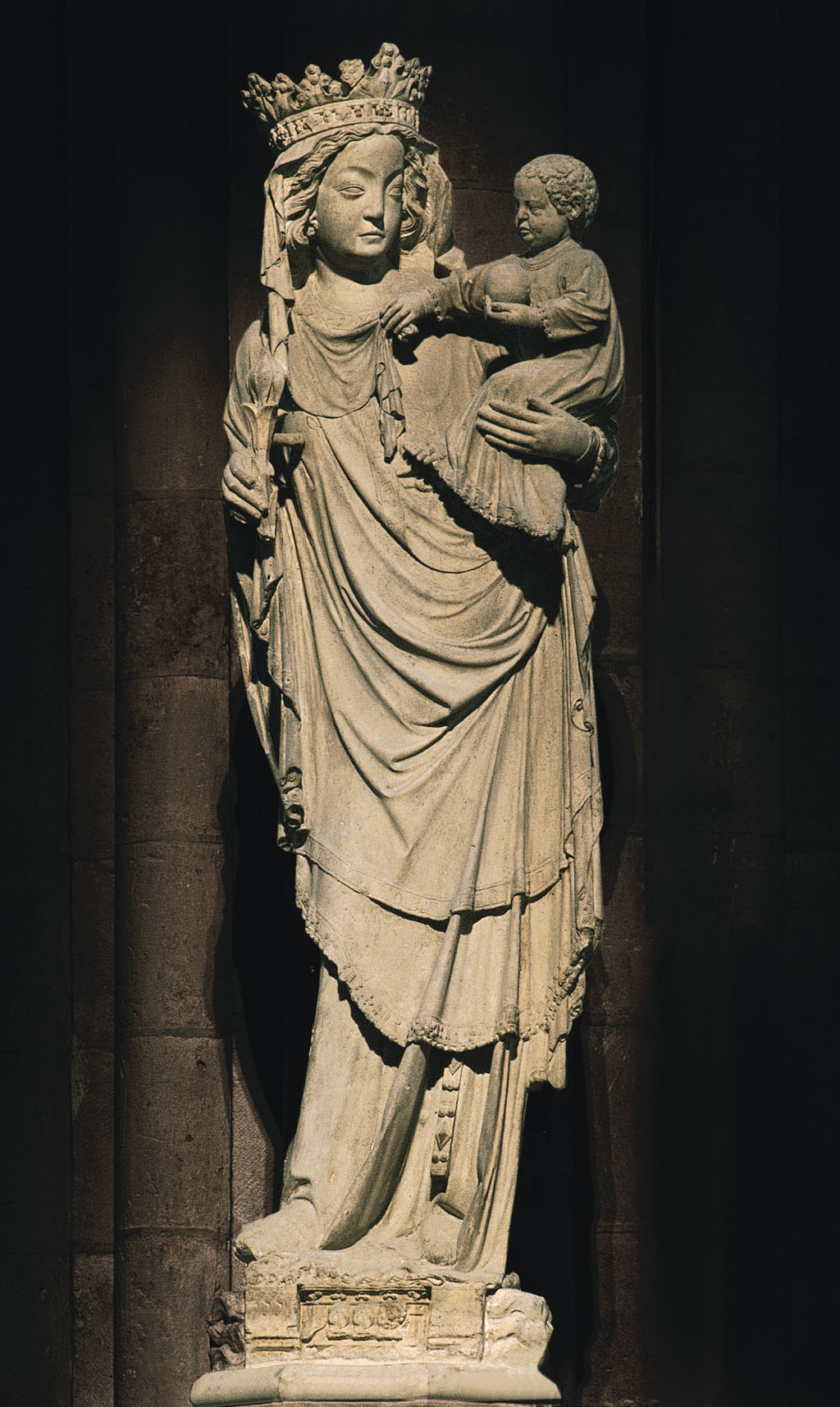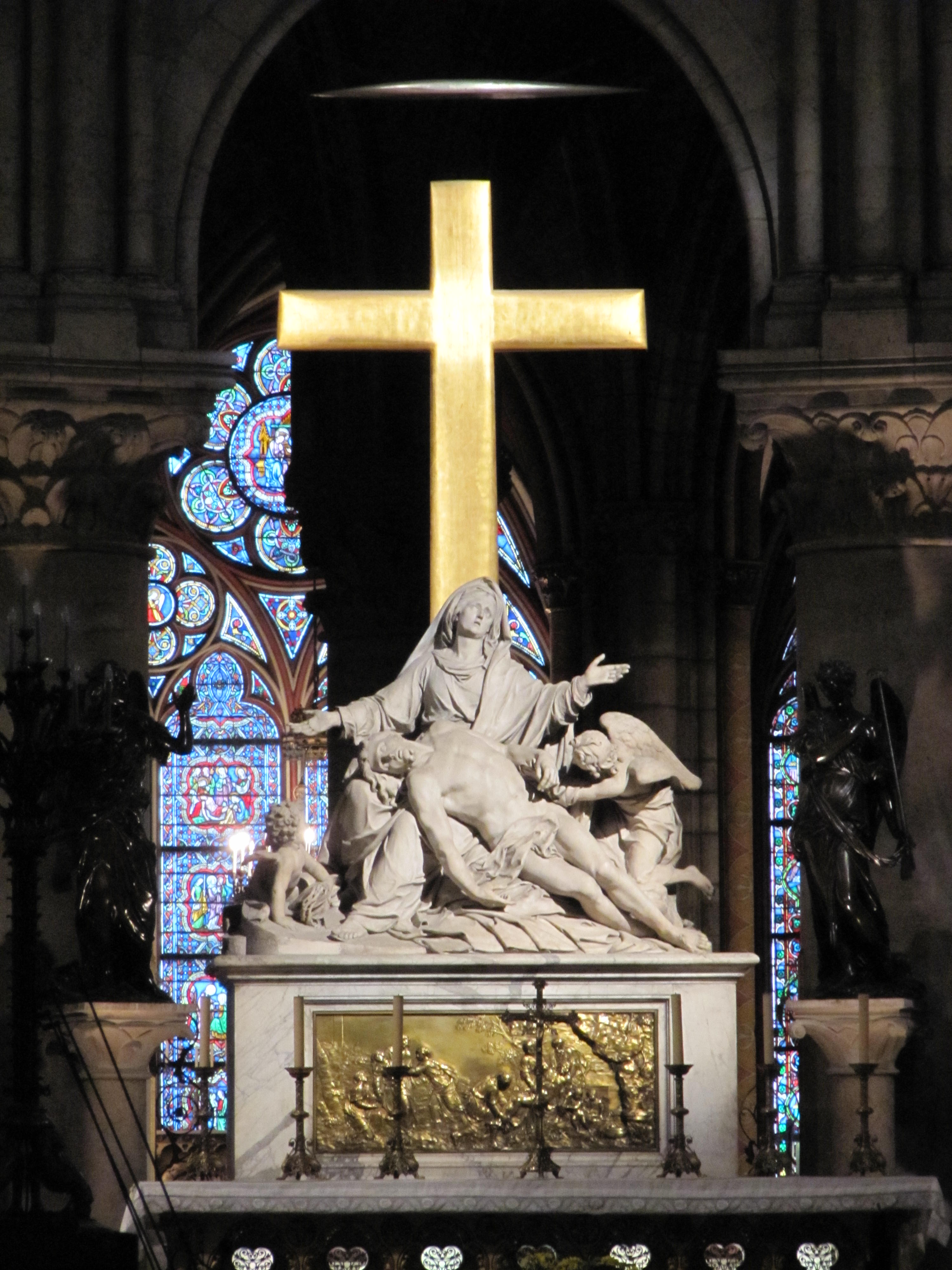 Thoughts from Notre Dame September 2017
Although I've been to Paris two or three times before, I didn't go to
see the Cathedral of Notre Dame. Until this
year, that is, when I saved the last day of my visit there to finally
see the most famous Gothic Cathedral of Paris, and one of most famous
Catholic Churches of the world. I knew it was famous, I knew
it was huge and steeped in history, but, frankly, from the photos I've
seen before it didn't look so interesting, or big, to me. That
was because it's hard to show in a photo the true scale of such
monumental construction, even if known objects are included as
reference. Later on I found this photo that, if you haven't been there
yourself, can give you a hint. To the right of the cathedral (your left) is a
typical Parisian 6 story building, and those are six high sories, it's a
huge, massive building on its own, yet the cathedral simply dwarfs it!
But, looking at the photo, I still don't get the same feeling I had when I finally stood in front of it and let my eyes sweep up the two towers, true sky-scrapers of pure stone masonry, united to form the West façade of the Cathedral. The three portals themselves are each as big as 5-story houses and the doors seem to have been made for Goliaths. Yet, as impressive as the construction is, its history and significance are even more so. The building of this cahedral took almost 200 years, from the 12'th century till the 14'th century. Even after that, the work continued, to strengthen, enlarge, modify, add, improve, and the work never stopped till this day. Aside from typical construction and maintenance work, new bells are now being added, to the left-side tower, because, originally, only the right-side tower was equipped with bells. Te cathedral has a special fund through which anyone can contribute to the expense of buying and installing the new bells, thus becoming a "Cathedral Builder". In 1992 a full restoration and computerization of the cathedral's 18-th century organ, already rebuilt and expanded in the 19-th century - the organ has now 7,952 pipes. The cathedral, intended from the beginning to be the main church of the city and the seat of the Archbishop of Paris, was built this big to be visible from anywhere in the city, an ever present reminder to the people, of their faith and of their duty to God. The 28 statues that you see lined up on the wall above the three portals are not saints, as I first thought, but the statues of 28 consecutive kings of France that, upon their coronation, swore to protect and defend the Catholic Church! This covenant went, of course, the way of the dodo when the French revolution happened, and by the third French "republic" many priceless, irreplaceble statues of saints at Notre Dame have been destroyed by the "revolutionaries" and the cathedral itself was used as a barn for food storage! Yes "communism" has a lot to do with the Paris "commune" and we should never, ever, forget or ignore history, we'd do this at our own peril! Something else I learned that day, and I'd like to share it with you. What we know by its short name of "Notre Dame" ("Our Lady" - a French title for Mary, Mother of Jesus) is, in fact "The Cathedral of Our Lady of Paris" (La Cathédrale de Notre Dame de Paris). And who is "Our Lady of Paris"? She is personified by an exquisite 12-th century statue of the Blessed Virgn Mary with the Child Jesus, statue that was brought to the Cathedral, as its construction was being finished in the 1300's, from the pre-existing Chapel of St. Aignan, not far away in the Cloister of the Canons (ecclesiastical dignitaries), to become "Our Lady of Paris" (Notre Dame de Paris) and take ownership of her new church.  Notre Dame de Paris - Our Lady of Paris -
She "owns" the church bearing her name
For even though the building is
now the property of the French state, and it's being leased in
perpetuity to the Catholic Archdiocese of Paris, the church belongs
to The Blessed Virgin Mary! How I found this out is
another short story.There is only one flagstone (paving stone) in the cathedral, that bears an inscription, although plaques with inscriptions are many, on walls and even on columns. This particular inscription marks the place where a certain Paul Claudel has converted to the Catholic faith, on such and such date, during the evening service, while the Magnificat was being sung. Paul Claudel is rather famous, he also was French Ambassador to Washington, D.C. until 1933, and you can find the interesting story of his conversion somewhere else, or ask me for it, but what is this "Magnificat" mentioned there? Not being familiar with the Catholic mass, and being too tired, cold and hungry to stay for the evening service, I made myself a note to look it up. Magnificat is the name of one of the oldest eight Byzantine chants still in use during Catholic services. Its words were taken straight from the Gospel of Luke, 1.46-55, and it is probably the oldest Marian hymn. It's known also as "The Song of Mary" and sung or read in all Christian churches, although at different times of the day - e.g. the Catholics sing it at Vespers (evening office) and make it a public ceremony on Sundays and Holidays, while the Orthodox sing it at the morning services. I found a video recording of a Magnificat ceremony at the Notre Dame cathedral, link below, it is, indeed, absolutely Byzantine, and, watch for this: when the singing of the Magnificat, the high point of the mass begins, all the priests, standing around the new altar, near the transsept of the cathedral, where most or all services take place nowadays, and the standing people, all are turning, hands in prayer, and facing... Our Lady of Paris! Now you know whose church this is. This has been done ever since she's been brought there, some 700 years ago, and the words of Mary in the chant are the same as written by Apostle Luke, or whoever wrote Luke's Gospel, 2000 years ago, only in Latin. While listening, wrap your mind around these facts, and timespan, if you can. Magnificat, at the Cathedral of Notre Dame
de Paris - only
3 minutes!
(Latin and English text in the page and at bottom) Adding to the impressivness of it all, the Pieta sculpture, 1723 by Nicolas Coustou, placed right behind the High (Main) Altar of te Cathedral, and the huge golden Cross behind it with the Glory above, make an unforgettable background, and one that is the instantly recognizable "landmark" of Notre Dame. The Cross and Glory weren't always there, they are a rather recent addition, a wooden cross gilded in yellow gold and Glory gilded in white gold. They are the work of Marc Couturier. The Cross was installed in Notre-Dame's choir in 1993 and the Glory in 1997. This Cross and Glory were commissioned by Aaron Jean-Marie Cardinal Lustiger, a Catholic convert from Judaism, archbishop of Paris between 1981 and 2005. with the declared purpose of making the tourists aware of the Christianity of the place as soon as they entered the cathedral. I think it does that pretty well.  Pieta - Descent from the Cross - by Nicolas Coustou, 1723 behind the main altar at Notre Dame. The altar frontal is by Vassé, 1744, representing the burial of Jesus, in gilded bronze MAGNIFICAT
Chris Back to The Blind Stork |